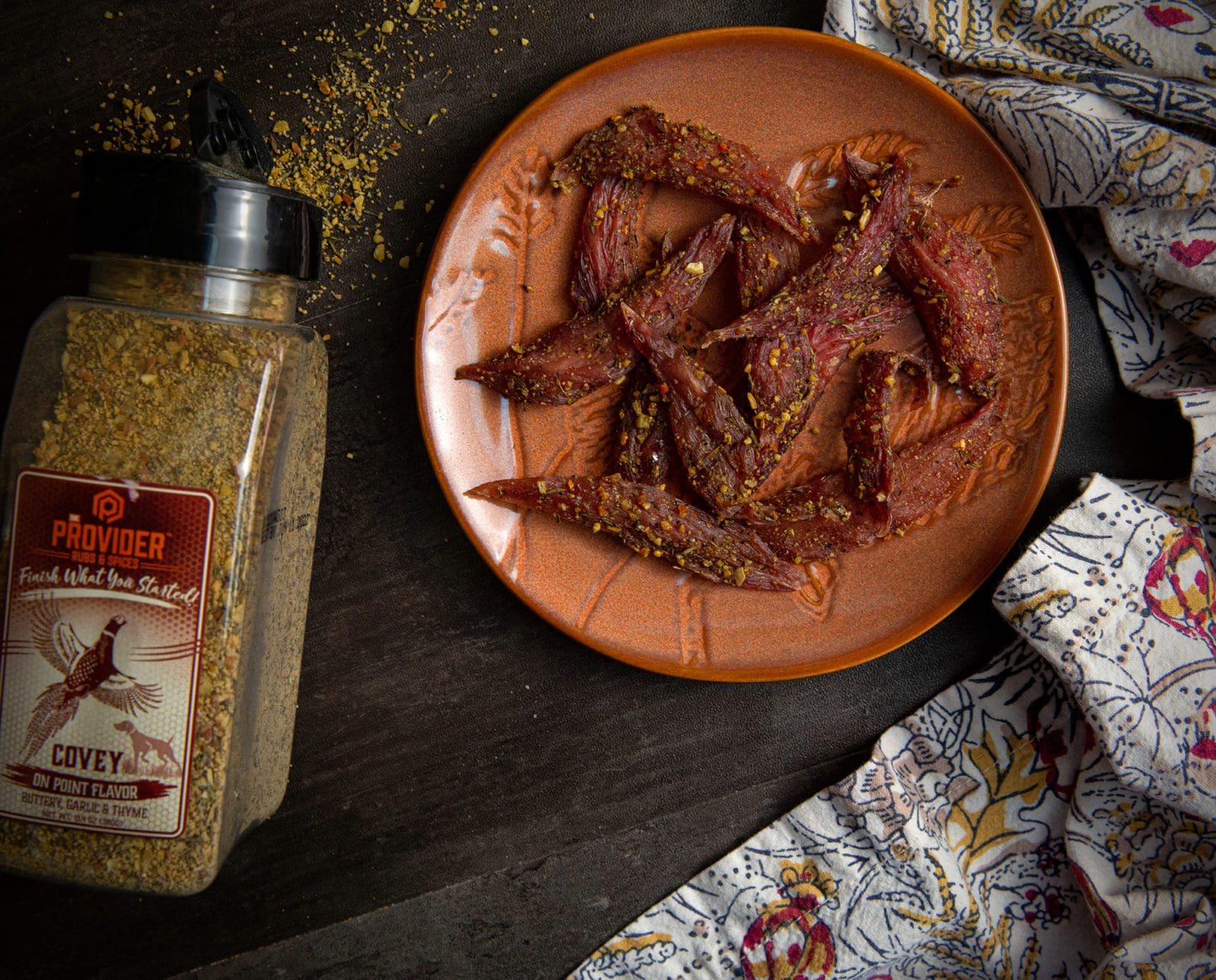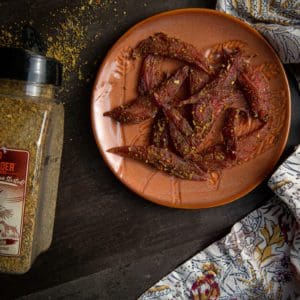Home » Small Game Cooking » How to Cook Upland Bird Tenderloins
How to Cook Upland Bird Tenderloins

Jack Hennessy grew up in the South Suburbs of Chicago…
From flash searing to low-and-slow jerky, learn three easy and simple ways to cook those delicious upland bird tenderloins
Yes, birds have tenderloins. If you’ve been reading cooking articles on Project Upland, you likely by now fully understand this, but many other upland hunters don’t realize this or forget to pull tenderloins from their upland breasts.
Tenderloins are indeed a separate cut—a smaller strip of meat behind the breast, between the keel bone and ribs—and will cook differently than the whole breast. They are, as the name suggests, tender and worth preparing apart from the rest of the bird.
Make sure to look for tenderloins after breasting out a bird. You don’t need a knife; simply peel them off. But what to do next with tenderloins? Below are some tips and a recipe.
Hot and fast tenderloins
Light season or just use salt and pepper, then hit the tenderloins with a quick sear on both sides in a hot skillet. Using a very thin layer of peanut or sunflower oil, sear no more than a minute per side at 500 degrees Fahrenheit. This is all you need for a great-tasting upland tenderloin, and it works for any size tenderloins from upland birds.
Tenderloins in a warm butter bath
Butter burns at 302 degrees, but if you have a skillet at 275, melt butter, and throw in some rosemary and garlic cloves, you can cook a seasoned tenderloin for several minutes. This imbues it with that buttery, delicious flavor. Note: make sure to spoon warm butter over the top as you cook.
Tenderloin jerky
One great thing about tenderloins: they come perfectly pre-shaped for jerky, or in the case of this recipe, kipper snacks.
I use sodium nitrite (found in Insta Cure No. 1) to properly cure most jerky. This ensures the jerky stays preserved for longer and reduces the risk of botulism. Also, a little Insta Cure No. 1 goes a long way, so pay attention to instructions on the package when applying. The instructions are also below, specifically for this recipe.
You can either smoke or dehydrate your jerky. I usually opt for dehydrating, as dehydrators allow for lower temps (versus my pellet grill which only gets down to 160). My MEAT! 6-Tray Dehydrator goes very low, but I run it at 140 for this recipe.
Enjoy, and as always reach out to me on Instagram (@WildGameJack) with any questions or comments.

Upland Bird ‘Kipper Snacks’
Equipment
- Dehydrator or
- Smoker
Ingredients
- Tenderloins from several upland birds (Ideally, 6 birds)
- 4 cups cold water
- 1/8 tsp Insta Cure No. 1
- 1/2 tsp liquid smoke (if dehydrating)
- The Provider Covey Rub or your favorite spice rub
Instructions
- Separate tenderloins from breasts. In a medium bowl, mix cold water and Insta Cure No. 1. Feel welcome to add liquid smoke for that smoke flavor if dehydrating.
- Soak tenderloins in water mixture overnight for no less than 12 hours and no more than 16 hours.
- When ready to dehydrate or smoke, remove tenderloins from water and rub liberally with The Provider Covey or other favorite rub.
- Add to the dehydrator for 3 1/2 to 4 hours at 140 for pheasant-size tenderloins. For slightly smaller birds—like ruffed grouse or chukar—dehydrate for 3 hours. For quail-size bird tenderloins, dehydrate for 2 hours. If smoking, 2 hours at 160 should be sufficient for rooster tenderloins; while 1 1/2 hours to smaller tenderloins works.
- Let tenderloins cool for half hour prior to serving or sealing.
Nutrition
Jack Hennessy grew up in the South Suburbs of Chicago and didn't start hunting until he attended graduate school in Spokane, Washington, at the age of 26. Hennessy began work in professional kitchens in high school but didn't start writing wild game recipes until he joined the Spokesman-Review in 2014. Since then, his recipes have appeared with Petersen's Hunting, Backcountry Journal, Gun Dog Magazine, among many others. He now lives with his Wirehaired Vizsla, Dudley, in Wichita, Kansas.




I always separate the tenderloins from breast before vacuum packing. Grandkids love them. Marinate in buttermilk. Double coat in seasoned flour and fry. Serve with dipping sauces